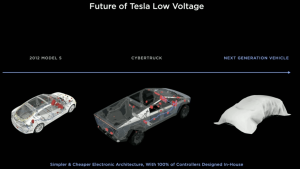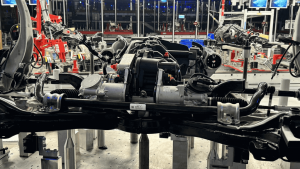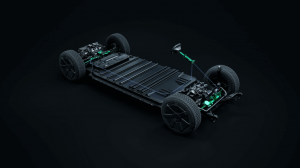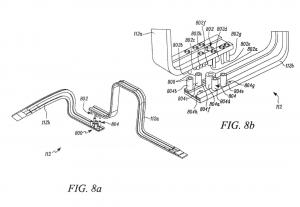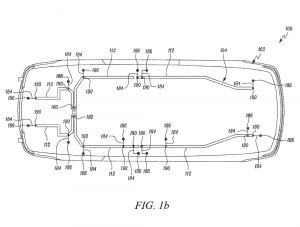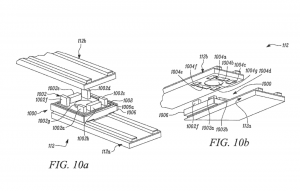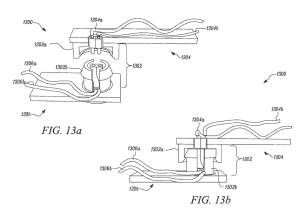Tesla Cybertruck revolutionized the automotive industry with its breakthrough 48V electrical system and steer-by-wire. Of course, such transformative advances would not have been possible without a new way of wiring wire harnesses and a new change in communication methods.
Tesla Motors recently filed a patent and is eyeing wire harnesses again.
Cybertruck may look a little bland and feel less good than Musk has previously said. However, Cybertruck’s advanced technologies don’t disappoint.
One of these is the 48V low-voltage electrical system used for the first time in a production vehicle. Tesla has improved and simplified its electrical architecture through significant improvements, which will allow it to build the next generation of electric vehicles at a better cost.
Tesla announced that the wiring architecture of the Cybertruck will be significantly simplified compared to previous Tesla electric vehicles. Tesla accomplished this by using multiple local controllers connected to a high-speed communication bus rather than connecting each electrical component to a central controller.
To understand this situation, it is necessary to talk about traditional vehicles.
Typically, every sensor and electrical component in a vehicle must be connected to a central controller and a low-voltage system for power. Sometimes, this means that complex parts require a lot of wires. Let’s take a car door as an example. It may contain sensors that signal to the car’s computer that the car is open, closed, or tilted. The same is true for windows, which have buttons that trigger them to open and close. These switches are connected to the vehicle’s controls, which in turn are connected to window actuators to lower or raise the glass.
At this point, we are adding speakers, airbags, cameras …… And you’ll understand why wiring harnesses are so confusing. The wires inside modern vehicles stretch for thousands of meters, adding complexity, cost, and weight. To make matters worse, building and installing them is basically done by hand. These are expensive and time-consuming processes that Tesla wants to eliminate.
That’s why it came up with the idea of distributed controllers. Instead of a centralized unit, the vehicle will be equipped with many local controllers for various functions.
Distributed controllers
As an example, door controllers are responsible for feeding windows, speakers, lights, mirrors, etc., and other components electrically before they can work. In this case, the wires would be short and could all be contained within the door assembly.
The door would then be connected to the vehicle’s data bus with just two wires, which also provide power to the electrical components. All of the complexity of the door can be realized with just two wires, whereas a conventional car would require a dozen or more, which is what Tesla has done with the Cybertruck.
The electric pickup uses a steer-by-wire system that requires a high-speed (low-latency) communications bus to transmit steering wheel movements to the Cybertruck’s wheels in realtime. That’s why the CAN bus used in most of today’s cars falls short: it has low data throughput (about 1 Mbps) and high latency. Instead, Tesla uses a version of the Gigabit Ethernet architecture with Power over Ethernet, using the same data lines to power the components.
The data network Tesla uses in Cybertruck has a latency of just half a millisecond, perfect for turn signals. It also provides enough bandwidth to allow the various controllers to communicate in real-time and work as one. Tesla was granted a patent for this communication system last December, and Cybertruck takes full advantage of it. However, Tesla has another ace in the hole that could help streamline manufacturing. It’s crucial for Tesla’s $25,000 electric car, which it plans to launch in 2025.
Modular Wiring System
According to a recent patent application entitled “Wiring System Architecture,” Tesla has designed a modular wiring system that greatly simplifies manufacturing. This includes backbone cabling for power and data, and is EMI shielded to limit interference. The best part is that this modular wiring includes conductive coatings and adhesives on the body, which supports robotic assembly and Tesla’s new unboxed vehicle manufacturing process.
According to graphics included in the patent application, the modular wiring system will make cables obsolete and components will snap into place thanks to proprietary connectors. It’s also flat, so the wires won’t stick out or even be noticeable. Unlike wire harnesses, which need to be installed manually by workers on a production line, the installation of a modular wiring system is better suited for automation.
In contrast, the connectors of a flat wiring system are included in every automotive component, from structural panels to more complex assemblies such as doors. Installing these components also involves making the necessary connections, similar to how Legos are glued together. This reduces production time and cost.
I’m not sure if Cybertruck includes this type of wiring, although it certainly uses an automotive-grade gigabyte Ethernet bus rather than a CAN bus. However, the two systems work together seamlessly and provide a double benefit when used together.
Tesla’s planned low-cost model probably won’t use steer-by-wire or other exotic components, but it will certainly need a fast communications backbone and a modular wiring system such as the one described in the patent.
Post time: Dec-13-2023
